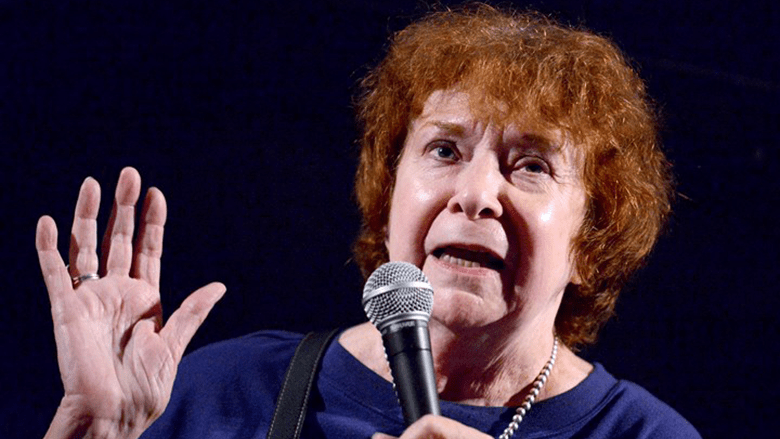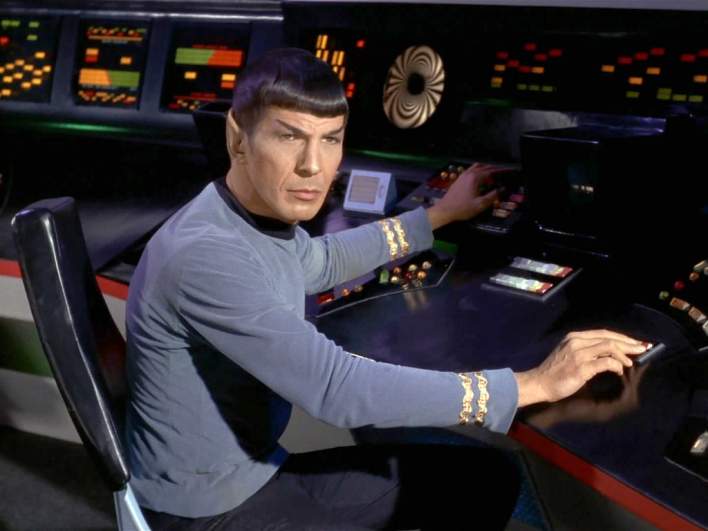
Albert L. Ortega / Getty Images
Dorothy Catherine (D.C.) Fontana is a name diehard Star Trek fans know. But some fans may not know Fontana is a woman!
Back in the 1960s, according to the Hollywood Reporter, not many women wrote in Hollywood, especially in the action and adventure genre. Over her lifespan, she helped expand the “Star Trek” universe, contributing to more than 30 episodes as well as videos, novels, and comics.
Here’s what you need to know about D.C. Fontana.
1. Dorothy Catherine Fontana Was Raised by a Single Mother
Dorothy Catherine (D.C.) Fontana was born March 25, 1939, in Sussex, New Jersey. She lived until 80, passing away on December 2, 2019, from cancer, in Los Angeles, California.
Fontana yearned to be a writer from an early age. According to this Writer’s Guild interview, Fontana says she started writing at 11. The stories she created included her friends. After those stories were written, she would read them aloud to those friends who would adlib dialogue. It proved an important skill.
Fontana was also raised by a single mother, one who wanted her to gain practical skills as she continued to pursue writing. So, Fontana entered Fairleigh Dickinson University in New Jersey, graduating with an associate’s of arts (AA) degree to perform clerical work while writing on the side; Fontana even wrote for her college newspaper. After graduating, Fontana was eager to enter the working world.
She began clerical work for Columbia Picture’s television wing. In that role, she saw various scripts she knew she could fix. Editing and writing, she used her initials, “D.C. Fontana,” when contributing, making it difficult to determine whether she was a woman or man. T.V. Overmind indicates she was 21 when she made her first script sale.
But she didn’t just use the name D.C. Fontana to write. She also used masculine pseudonyms when submitting works, such as Michael Bingham and Michael Richards. (Those two names were near and dear to her heart, her brothers, according to StarTrek.com.) IMDB indicates she even wrote for “The Wild, Wild West” as Michael Edwards.
Her career was put on pause when her supervisor died of a heart attack. Fontana was out of work and ready to make her next move. Without a job, she left for California.
2. She Met Gene Roddenberry on ‘The Lieutenant’
Within a couple of months of her boss’s death, Fontana found work as a secretary for a television drama – “The Lieutenant.” During her time working as a secretary on this show, she was eventually assigned to Gene Roddenberry – show creator. Her assignment happened somewhat by chance, Roddenberry’s assistant went out on maternity leave and Fontana was shuffled to help him.
Many important “Star Trek” acting legends were on “The Lieutenant,” including Leonard Nimoy (Spock), Majel Barrett (Nurse Chapel, Number One, and Lwaxana Troi), Walter Koenig (Chekov), Nichelle Nichols (Uhura), and Gary Lockwood (Gary Mitchell). Lockwood was the star of the show.
What seemed like happenstance may have been fate. Roddenberry soon moved onto other work – a new science-fiction style western called “Star Trek.” Although Fontana joined as Roddenberry’s assistant, she also began editing and writing scripts soon after.
3. She Was Instrumental in Establishing Spock’s Story

CBS / Getty Images
Fontana started with “Charlie X,” a story of a teenage boy whose powers were beyond his capacity to understand them. Though she had a number of successful episodes penned in her name, in an interview with StarTrek.com, Fontana said she’s most proud of writing “Journey to Babel” as well as developing the character of Spock. According to the New York Times, Fontana helped create Spock’s backstory of being half-Vulcan and half-human. And by helping create Spock, she’s also credited for developing the entire Vulcan race.
Among her credits for the original series include:
- “Charlie X”
- “Tomorrow Is Yesterday“
- “This Side of Paradise“
-
“Catspaw” as uncredited
- “Journey to Babel”
- “Friday’s Child”
- “By Any Other Name”
- “The Ultimate Computer”
- The Enterprise Incident
- “That Which Survives” as Michael Richards
- “The Way to Eden” as Michael Richards
Why did she use a pseudonym for “That Which Survives” and “The Way to Eden”? Rumor has it she was dissatisfied with those rewrites and the results. She left “Star Trek” not long after.
In Syfy, Fontana talks about her time in the Trek universe.
“We’re trying to tell stories about human beings in new situations, meeting new kinds of people and saying, ‘Hey, can we work together? Let’s see what we can do.’ It was very hopeful, and I still feel that it is. ‘Star Trek‘ is one of the shows that look to the future and try to be the best that we humans can be.”
4. She Wrote for ‘The Animated Series,’ ‘The Next Generation,’ and ‘Deep Space Nine’
She may have left “Star Trek,” but the fandom didn’t leave her. When “The Animated Series” began, Fontana was asked to write and edit stories for the cartoon. In total, she was the story editor for 21 episodes and the writer for one.
Fontana wrote about a topic she enjoyed – Spock. With “Yesteryear,” a story about Spock’s childhood based on “Journey to Babel,” she was able to again expand on Spock’s background. Included in this episode is more information about Spock’s sehlat as well as the ritual Vulcans participate in – the rite of passage to adulthood known as the kahs-wan.
In 1987, Roddenberry began a new Star Trek series – “Star Trek: The Next Generation.” Again he tapped Fontana to contribute. She’s credited for being a co-creator of the first episode, “Encounter at Farpoint.” From there, she continued to contribute to other episodes for the first three seasons.
Then in 1993, Rick Berman and Michael Piller asked her to help write the teleplay for “Dax,” a “Star Trek: Deep Space Nine” episode. This story tackled the complicated history of Curzon before Jadzia become the Dax host.
Fontana’s love of Star Trek didn’t end with television. She wrote Vulcan’s Glory and as StarTrek.com indicates, she also contributed to a comic book (Star Trek: Year Four – The Enterprise Experiment), video games (Bridge Commander, Tactical Assault), and Star Trek New Voyages: Phase II (“To Serve All My Days”).
5. She Went Beyond ‘Star Trek’
Although Trekkies and Trekkers know Fontana for helping to fill out the “Star Trek” universe, she wrote for a number of shows beyond Star Trek in the sci-fi, western, and adventure shows. Some of her writing credits include “Big Valley,” “Bonanza,” “Lancer,” “Babylon 5,” “Dallas,” “He-Man and the Masters of the Universe,” “Land of the Lost,” “The Six Million Dollar Man,” and “Logan’s Run.”
She was also an actress in the “Drew Carey Show,” starred in “Chaos on the Bridge,” and produced for “Star Trek: The Animated Series,” and “Star Trek: The Next Generation.” She even played herself in “For the Love of Spock,” the documentary by Adam Nimoy that came out in 2016 about his father, Leonard Nimoy.
With Fontana’s vast credits, she describes herself not as a trailblazer or pioneer in television, even when she’d gone where few women had gone before. Instead, she sees herself as a storyteller. For those who’ve seen any of the myriad shows she’s written, that’s exactly what she will always be. And to “Star Trek” fans, she’ll also always be one of the founders along with Gene Roddenberry.
READ NEXT: Could This Character Return to ‘Star Trek’?